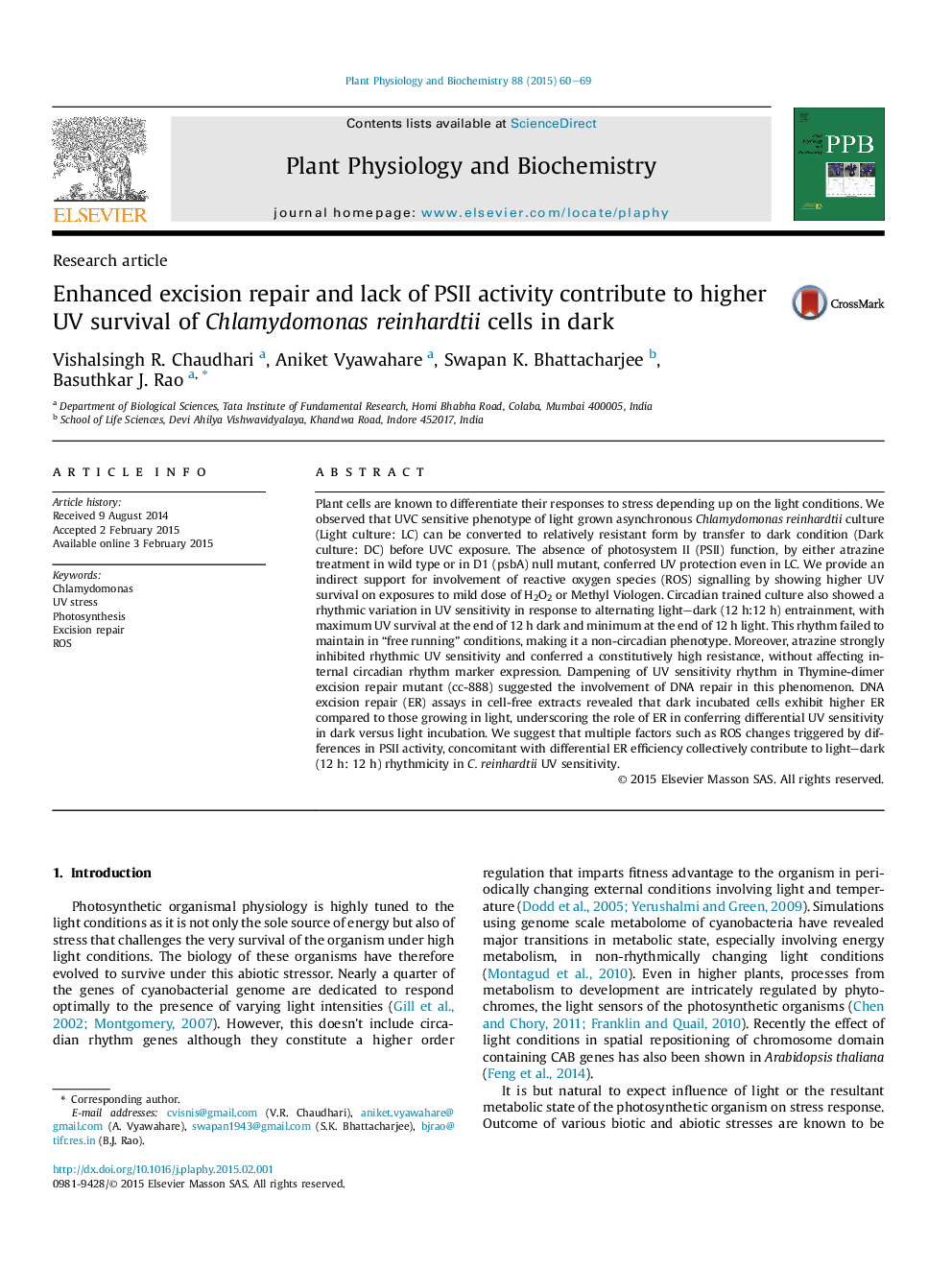| کد مقاله | کد نشریه | سال انتشار | مقاله انگلیسی | نسخه تمام متن |
|---|---|---|---|---|
| 2016008 | 1541933 | 2015 | 10 صفحه PDF | دانلود رایگان |

• Basis of UV sensitivity variation in Chlamydomonas reinhardtii is proposed.
• We show daily UV sensitivity variations are non-circadian.
• Photosynthetic activity plays a role in determining UV sensitivity.
• ROS signalling could be mechanism by which UV sensitivity changes.
• Daily variation in DNA excision repair efficiency correlates with UV sensitivity.
Plant cells are known to differentiate their responses to stress depending up on the light conditions. We observed that UVC sensitive phenotype of light grown asynchronous Chlamydomonas reinhardtii culture (Light culture: LC) can be converted to relatively resistant form by transfer to dark condition (Dark culture: DC) before UVC exposure. The absence of photosystem II (PSII) function, by either atrazine treatment in wild type or in D1 (psbA) null mutant, conferred UV protection even in LC. We provide an indirect support for involvement of reactive oxygen species (ROS) signalling by showing higher UV survival on exposures to mild dose of H2O2 or Methyl Viologen. Circadian trained culture also showed a rhythmic variation in UV sensitivity in response to alternating light–dark (12 h:12 h) entrainment, with maximum UV survival at the end of 12 h dark and minimum at the end of 12 h light. This rhythm failed to maintain in “free running” conditions, making it a non-circadian phenotype. Moreover, atrazine strongly inhibited rhythmic UV sensitivity and conferred a constitutively high resistance, without affecting internal circadian rhythm marker expression. Dampening of UV sensitivity rhythm in Thymine-dimer excision repair mutant (cc-888) suggested the involvement of DNA repair in this phenomenon. DNA excision repair (ER) assays in cell-free extracts revealed that dark incubated cells exhibit higher ER compared to those growing in light, underscoring the role of ER in conferring differential UV sensitivity in dark versus light incubation. We suggest that multiple factors such as ROS changes triggered by differences in PSII activity, concomitant with differential ER efficiency collectively contribute to light–dark (12 h: 12 h) rhythmicity in C. reinhardtii UV sensitivity.
Journal: Plant Physiology and Biochemistry - Volume 88, March 2015, Pages 60–69